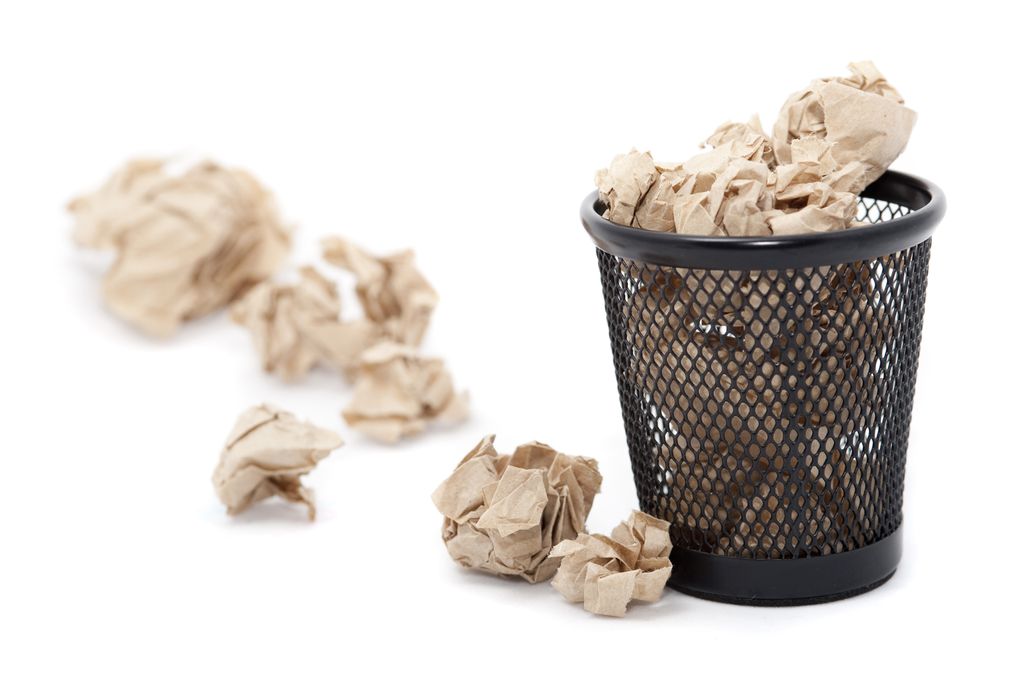
In today's digital age, email has become an essential tool for academics to communicate, collaborate, and manage their workload. However, the sheer volume of emails can quickly become overwhelming and hinder productivity. Streamlining email processes can help academics reduce email overload, improve productivity, enhance communication, and manage time effectively. In this article, we will explore 10 tips for streamlining email for academics, covering various aspects such as setting up an efficient email system, effective email writing strategies, managing email notifications, and collaborating and sharing files via email.

Email overload can be a major challenge for academics, with an overwhelming number of messages flooding their inbox on a daily basis. To tackle this issue, it is important to implement strategies that help reduce email overload and improve efficiency. Here are some tips to consider:
By implementing these strategies, academics can effectively manage email overload and focus on more important tasks.
Improving productivity is crucial for academics who often have multiple tasks and deadlines to manage. To enhance productivity, consider the following strategies:
Tip: Avoid multitasking while checking emails as it can lead to decreased focus and productivity.
By implementing these strategies, academics can streamline their email management and improve overall productivity.
Enhancing communication is crucial for academics as it allows for effective collaboration and information sharing. By improving communication, academics can streamline their work processes and ensure that important information is conveyed accurately and efficiently. One way to enhance communication is by utilizing email as a primary means of communication. Email provides a written record of conversations and allows for clear and concise communication. Additionally, email allows academics to communicate with colleagues and collaborators from different institutions and time zones, making it a valuable tool for enhancing collaboration.
Managing time effectively is crucial for academics to stay organized and focused. With the constant influx of emails, it's important to implement strategies that help prioritize and manage time efficiently. Here are some tips to manage time effectively when dealing with emails:

Organizing your email folders is crucial for efficient email management. By creating a well-structured folder system, you can easily locate and manage your emails. Here are some tips to help you organize your email folders:
Tip: Avoid creating too many folders as it can become overwhelming and make it harder to find specific emails.
By following these tips, you can streamline your email management and save time searching for important emails.
Creating filters and rules in your email system can greatly improve your email management and organization. Filters and rules allow you to automatically sort incoming emails into specific folders based on criteria that you set. This can help you prioritize and categorize your emails, making it easier to find and respond to important messages. Additionally, filters and rules can be used to automatically mark certain emails as read, forward emails to specific recipients, or even delete unwanted emails. By setting up filters and rules, you can streamline your email workflow and reduce the time spent on manual email organization.
Email templates are pre-designed email formats that can be used for repetitive tasks such as sending out meeting invitations, responding to common inquiries, or sharing updates. By using email templates, academics can save time and ensure consistency in their email communications. Templates can be customized to include personalized information while maintaining a professional and polished appearance. They can also be used to streamline email workflows and improve efficiency.
Setting up autoresponders can be a helpful way to manage your email communications. Autoresponders are automated email messages that are sent in response to specific triggers, such as when you are out of the office or on vacation. They can provide important information to the sender, such as when you will be available again or who to contact in your absence.
Using autoresponders can save you time and ensure that important messages are not missed. Here are a few tips for setting up effective autoresponders:
Remember, autoresponders can be a valuable tool for managing your email, but it's important to use them judiciously and provide helpful information to the sender.

When writing emails, it is important to keep the content clear and concise. This ensures that the recipient can quickly understand the message without getting overwhelmed. Here are some tips to help you write clear and concise emails:
Remember, the goal is to communicate your message effectively while respecting the recipient's time and attention.
Tip: Avoid using jargon or technical terms that the recipient may not understand. Keep the language simple and straightforward.
Proper email etiquette is crucial for effective communication in academia. It ensures that your emails are professional, clear, and respectful. Here are some important guidelines to follow:
Remember, email is a formal mode of communication in academia, so it's important to maintain professionalism and respect in your email interactions.
Email miscommunication can lead to misunderstandings and delays in academic communication. To avoid miscommunication, it is important to be clear and concise in your emails. Use simple and straightforward language to convey your message. Avoid using jargon or technical terms that may not be familiar to the recipient. Additionally, make sure to proofread your emails before sending them to ensure that they are free from grammatical errors and typos.
Crafting effective subject lines is crucial for ensuring that your emails are opened and read. A well-crafted subject line can grab the recipient's attention and entice them to open your email. Here are some tips to help you create compelling subject lines:
Remember, the subject line is the first thing recipients see, so make sure it captures their interest and encourages them to open your email.

In order to minimize distractions and stay focused on important tasks, it is essential to implement effective strategies. Here are some tips to help you stay on track:
Remember, your emails are your business, so it's important to take control of your inbox and minimize distractions.
Customizing notification settings is an important step in managing email overload and minimizing distractions. By adjusting your notification preferences, you can control when and how you receive email notifications, allowing you to stay focused on important tasks.
Here are some tips for customizing your notification settings:
Remember, customizing your notification settings can help you regain control over your inbox and improve your productivity.
Email apps and extensions can greatly enhance your email experience and make managing your inbox more efficient. Here are a few tips for using email apps and extensions:
Tip: Experiment with different apps and extensions to find the ones that work best for your needs and workflow.
By utilizing email apps and extensions, you can streamline your email management process and improve your overall productivity.
Prioritizing emails is crucial for academics to effectively manage their inbox and stay organized. By prioritizing emails, academics can ensure that important messages are addressed promptly and efficiently. Here are some strategies to help prioritize emails:
By implementing these strategies, academics can streamline their email workflow and focus on the most important tasks and communications.

Collaborative projects often require effective communication and seamless sharing of files among team members. Email can be a valuable tool for collaborating on projects, allowing team members to share updates, documents, and feedback. Here are some strategies to make the most out of using email for collaborative projects:
When it comes to sharing large files via email, it is important to consider the limitations of email attachments. Most email providers have a maximum file size limit for attachments, which can range from a few megabytes to a few gigabytes. If the file you want to share exceeds this limit, you may encounter issues such as failed uploads or bounced emails. To overcome this limitation, consider using cloud storage services or file-sharing platforms. These services allow you to upload large files to the cloud and share them with others by sending a link instead of attaching the file directly to the email. This not only ensures that the file reaches the recipient successfully but also saves storage space in your email account.
Cloud storage services offer a convenient and secure way to store and share files via email. With cloud storage, you can easily access your files from any device with an internet connection. Additionally, cloud storage services provide features such as file versioning, which allows you to keep track of different versions of a file and revert back to previous versions if needed.
When utilizing cloud storage services for email collaboration, it is important to ensure that the shared files are organized and easily accessible. One way to achieve this is by creating folders and subfolders within the cloud storage platform to categorize different types of files or projects. This helps to streamline the email communication process and ensures that everyone involved has access to the relevant files.
To further enhance collaboration, some cloud storage services also offer the ability to comment on files and track changes. This allows for seamless communication and feedback within the shared files, eliminating the need for lengthy email threads.
In summary, utilizing cloud storage services can greatly improve the efficiency of email communication by providing a centralized location for file storage and collaboration. By organizing files and utilizing features such as file versioning and commenting, academics can streamline their email workflow and enhance collaboration with colleagues and peers.
Managing email attachments is an essential skill for academics. Efficiently handling attachments can save time and ensure that important files are easily accessible. Here are some strategies for managing email attachments:
Remember, it's important to regularly clean up your email attachments to avoid clutter and maintain a well-organized inbox.
In conclusion, implementing these 10 tips can greatly streamline email communication for academics. By organizing emails, setting up filters, and utilizing email management tools, academics can save time, reduce stress, and improve productivity. Additionally, adopting effective email etiquette and practicing good email habits can enhance professional communication and collaboration. Remember, email is a powerful tool, and by following these tips, academics can make the most out of their email experience.
To reduce email overload, you can unsubscribe from unnecessary mailing lists, set up filters to automatically sort incoming emails, and prioritize emails based on importance.
To improve email productivity, you can use keyboard shortcuts to quickly navigate and perform actions, schedule dedicated time blocks for checking and responding to emails, and utilize email templates for common responses.
To enhance communication through email, you can use clear and concise language, provide context and necessary information in your emails, and use formatting such as bullet points or headings to make your emails easier to read.
To manage time effectively with email, you can set specific times for checking and responding to emails, avoid constantly checking your inbox throughout the day, and batch process emails by grouping similar tasks together.
Organizing email folders allows you to easily locate and retrieve important emails, reduces clutter in your inbox, and helps you stay organized and focused.
To avoid email miscommunication, you can re-read and proofread your emails before sending, use clear and unambiguous language, and consider the tone and context of your message to ensure it is properly conveyed.